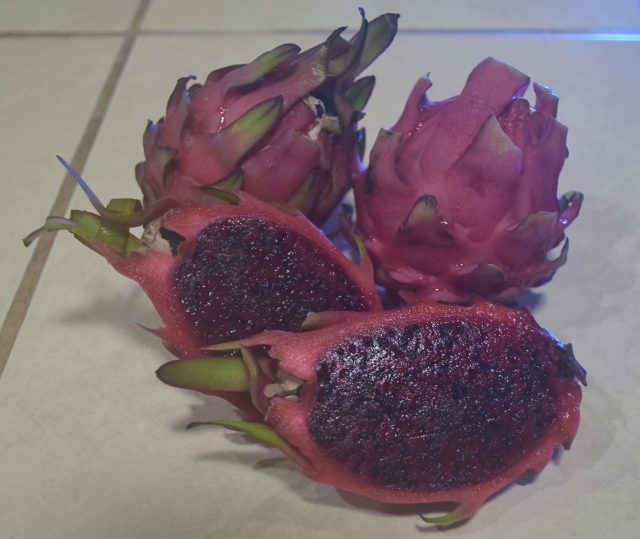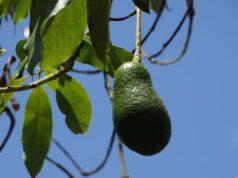The Pitaya, this strange looking softball sized fruit will grab your attention with its reddish pink skin and overlapping scaly leaves. Even more fascinating is the deep magenta colored fruit inside with its tiny black edible seeds (quite different to the white flesh of the Vietnamese Dragon Fruit or the Middle Eastern yellow).
This type of pitaya or pitahaya (Hylocereus costaricensis) is native to Costa Rica and Nicaragua where it is grown commercially for its fruit. The cactus can be trained in a tree or bush form for easy production or if left to grow wild will form an impressive ornamental vine with huge flowers that only bloom at night.
Looks can be deceptive! With such an unusual appearance many are surprised by its mild flavor which is melon or pear like, with a similar texture and a hint of tartness. Some say it’s “Nicaragua’s Kiwi fruit”.
In Nicaragua the pitaya season runs from May until November with a peak season during the months of June, July, August and September.
You can eat pitaya as a simple fruit by slicing it in half and scooping out the flesh. The mild taste of the pitaya often benefits from the addition of some freshly squeezed lime as a flavor enhancer. Another way to serve pitaya is with yoghurt or vanilla ice cream.
Freshly made pitaya juice will be described as any combination of purplish-red, reddish-purple, purplish-pink, or mauve-crimson. Either way, if someone has never seen it before they will be fascinated enough by its magnificent color to ask you what it is that you’re drinking.
Many people use it in smoothies, adding banana, coconut water, lemon or ginger. Experiment with your usual ingredients as pitaya will add health benefits and color more than any overpowering flavor.
Health Benefits
With only 60 calories, a gram of fiber and 9 grams of carbohydrates per 100 gram serving as well as important micronutrients such as vitamin C, calcium, and vitamin A, pitaya (when in season) is a health food you should be eating daily.
Some benefits of this fruit have been studied and proven more than others, however; there is agreement on its positive impact on those suffering from diabetes and high blood pressure. The antioxidants in pitaya are believed to be effective at lowering the risk of certain types of cancer and the tiny seeds are high in omega-3 fats which can fight inflammation and autoimmune diseases.
First Published in Del Sur News – May 2018







